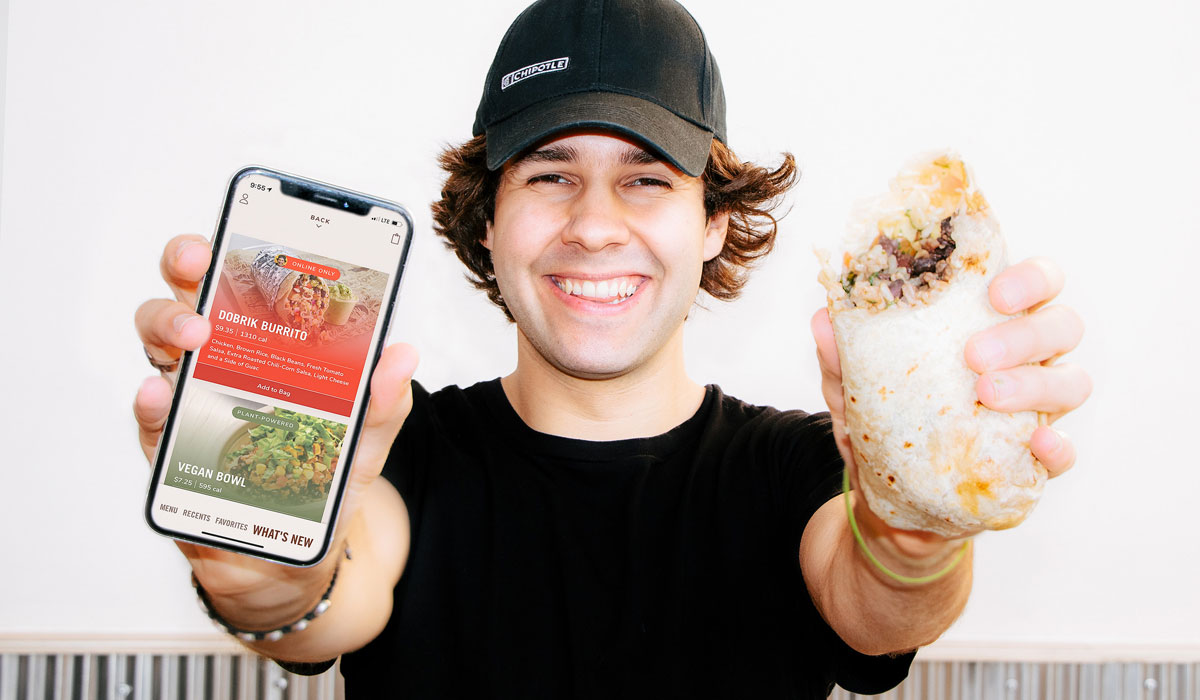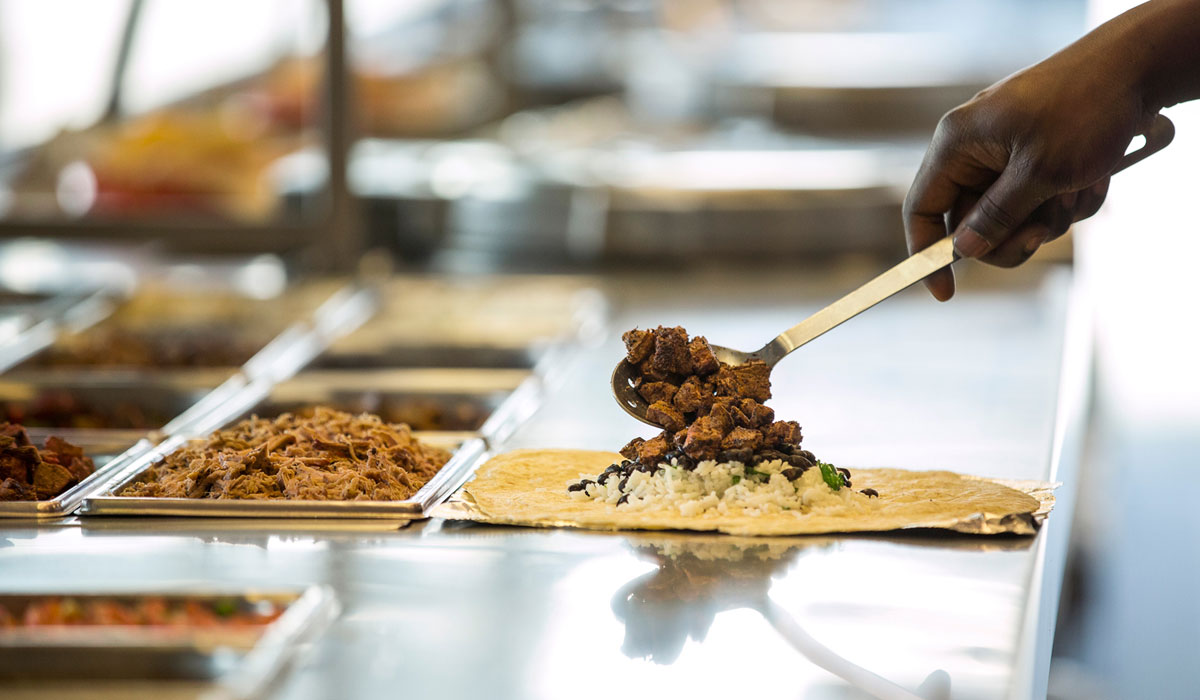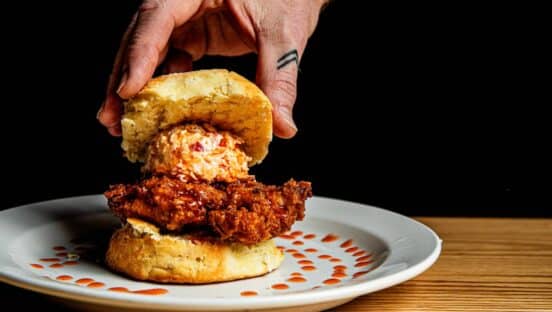When Chipotle raised its prices in mid-January, it made national news. The 5–7 percent hike hit select markets in April and November of 2017 before extending to the remaining 45 percent of Chipotle’s system soon after the New Year. The reason this grabbed headlines was two-fold. Firstly, the uptick was Chipotle’s first price change since mid-2014—before its E. coli crisis cratered the fast-casual’s performance. The second reality is that, without much debate, Chipotle’s value proposition has historically been hard to rival in its sector.
READ MORE: The next big challenge in Chipotle’s comeback
Even with the increase, BTIG analyst Peter Saleh said that’s still the case. “We believe one of Chipotle’s less-appreciated attributes is its compelling value relative to major fast-casual competitors. Despite its premium positioning and higher quality ingredients, Chipotle remains underpriced compared to its traditional fast-casual Mexican peers and emerging fast casual competitors,” Saleh wrote in a December 19 note.
Back in April, Chipotle posted Q1 same-store sales of 2.2 percent that easily sailed StreetAccount’s call of 1.3 percent. And the brand’s stock popped close to 10 percent. Chipotle credited higher menu prices for higher checks, and thus, the better-than-expected sales. It took a 4.9 percent benefit from menu price increases. These were partially offset by fewer transactions.
This past quarter—Q3—which ended September 30, showed another increase in average check buoyed by a 3.8 percent effective menu price increase (transactions fell 1.1 percent and comps were up 4.4 percent).
Here’s the question: Even after the increases, is Chipotle still underpriced? And if so, what does that mean for its potential sales growth?
BTIG conducted a survey across 26 cities to really define this pricing gap between Chipotle and its competitors. Based on the results, Chipotle’s national Mexican competitors are priced a whopping 6.6 percent higher on popular entrée items (burritos and bowls for chicken, steak, carnitas, and veggie).
The largest gap came at 700-unit Qdoba, dealt by Jack in the Box in March to Apollo Global Management LLC for about $305 million cash. Qdoba came in at 10.1 percent higher than Chipotle, followed by Baja Fresh at 6.7 percent, and FOCUS Brands’ Moe’s Southwest Grill at 3.1 percent. All three of the brands, unlike Chipotle, are privately held.
“We believe this indicates Chipotle has room to raise menu prices across the country or possibly adopt a different pricing structure [fewer tiers, more inclusive] that could raise average check,” Saleh said.
This gap was even wider when it came to side items like guacamole, chips and salsa, and a large fountain drink. Competitors priced at 12, 26, and 11.8 percent higher on average, respectively, for those items. The guacamole difference is pretty staggering as you can see in the breakdown below.
BTIG also performed a survey against some emerging brands, like Chopt, sweetgreen, and Dig Inn. The results: Much of the same with mid-teens price gaps compared to Chipotle.
“As management has noted at various points in time, Chipotle is generally priced lower than its national competitors on comparable items, which provides the concept with both a strong value proposition and pricing power,” Saleh added.

The pricing comparisons to Chipotle are based on stores in the same trade areas. It’s probably worth noting that Chipotle doesn’t include chips with burritos (like Moe’s for instance). Some other quick points: Qdoba’s pricing structure offers queso and guacamole at no additional charge, unlike Chipotle. If you factored that in, the relative gap would be smaller or actually place Qdoba below that of Chipotle. However, as BTIG noted, not all customers add guacamole or queso and when weighting the additional cost by prevalence (Qdoba has previously said queso was included in nearly half of entrees), BTIG estimates that Qdoba would still be slightly higher than Chipotle.
Qdoba (versus Chipotle)
- Chicken burrito: 12.6 percent
- Steak burrito: 5.9 percent
- Carnitas burrito: 13.6 percent
- Veggie burrito: 8.1 percent
- Guacamole: 40.1 percent
- Chips & Salsa: –3.2 percent
- Large Drink: –1.1 percent
- Average: 10.9 percent
- Weighted average: 10.3 percent
Moe’s (versus Chipotle)
- Chicken burrito: 6.2 percent
- Steak burrito: 1.1 percent
- Carnitas burrito: 8.5 percent
- Veggie burrito: –3.3 percent
- Guacamole: 48.7 percent
- Moe’s includes chips free of charge with orders
- Large Drink: 11.9 percent
- Average: 12.9 percent
- Weighted average: 7.2 percent
Baja Fresh (versus Chipotle)
- Chicken burrito: 10.6 percent
- Steak burrito: 4.8 percent
- Carnitas burrito: 8.8 percent
- Veggie burrito: 2.7 percent
- Guacamole: –9.1 percent
- Chips & Salsa: 39.4 percent
- Large Drink: 5.1 percent
- Average: 8.9 percent
- Weighted average: 7.5 percent
Average
- Chicken burrito: 9.8 percent
- Steak burrito: 4 percent
- Carnitas burrito: 10.3 percent
- Veggie burrito: 2.5 percent
- Guacamole: 26.6 percent
- Chips & Salsa: 18.1 percent
- Large Drink: 5.3 percent
- Average: 10.9 percent
- Weighted average: 8.3 percent
Here’s a look at the burrito pricing comparison by average cost by trade areas (why Chipotle’s price changes slightly):
Chicken
- Qdoba: $7.94
- Chipotle: $7.05
- Premium to Chipotle: 12.6 percent
- Moe’s: $7.51
- Chipotle: $7.08
- Premium to Chipotle: 6.2 percent
- Baja Fresh: $8.03
- Chipotle: $7.26
- Premium to Chipotle: 10.6 percent
Average premium: 9.8 percent
Steak
- Qdoba: $8.52
- Chipotle: $8.04
- Premium to Chipotle: 5.9 percent
- Moe’s: $8.16
- Chipotle: $8.07
- Premium to Chipotle: 1.1 percent
- Baja Fresh: $8.63
- Chipotle: $8.24
- Premium to Chipotle: 4.8 percent
Average premium: 4 percent
Carnitas (LTO at Chipotle)
- Qdoba: $8.52
- Chipotle: $7.50
- Premium to Chipotle: 13.6 percent
- Moe’s: $8.16
- Chipotle: $7.52
- Premium to Chipotle: 8.5 percent
- Baja Fresh: $8.38
- Chipotle: $7.70
- Premium to Chipotle: 8.8 percent
Average premium: 10.3 percent
Veggie
- Qdoba: $7.62
- Chipotle: $7.05
- Premium to Chipotle: 8.1 percent
- Moe’s: $6.85
- Chipotle: $7.08
- Premium to Chipotle: –3.3 percent
- Baja Fresh: $7.46
- Chipotle: $7.26
- Premium to Chipotle: 2.7 percent
Average premium: 2.5 percent
“Our sense is that while Chipotle has historically been underpriced relative to these competitors, the pricing gap has likely increased in recent years as other concepts have taken more consistent price increases,” Saleh wrote.
It’s also true that Chipotle, historically, has taken larger, but less frequent price increases than its competitors. It’s kind of the rip-off-the-pricing Band-Aid model. And like the January result showed, Chipotle’s food safety woes likely kept it from raising prices as it recovered. It was facing enough traffic concerns without adding pricing into the mix.
Let’s take a deeper look at the side-item pricing comparison:
Guacamole
- Qdoba: $2.97
- Chipotle: $2.12
- Premium to Chipotle: 40.1 percent
- Moe’s: $3.15
- Chipotle: $2.12
- Premium to Chipotle: 48.7 percent
- Baja Fresh: $2.08
- Chipotle: $2.28
- Premium to Chipotle: –9.1 percent
Average premium: 26.6 percent
Chips & Salsa
- Qdoba: $2.04
- Chipotle: $2.11
- Premium to Chipotle: –3.2 percent
- Baja Fresh: $3.07
- Chipotle: $2.20
- Premium to Chipotle: 39.4 percent
- Moe’s (free with orders)
Average premium: 17.9 percent
Large Fountain Drink
- Qdoba: $2.23
- Chipotle: $2.26
- Premium to Chipotle: –1.1 percent
- Moe’s: $2.50
- Chipotle: $2.24
- Premium to Chipotle: 11.9 percent
- Baja Fresh: $2.46
- Chipotle: $2.34
- Premium to Chipotle: 39.4 percent
Average premium: 5.1 percent
Returning to the topic of emerging competitors, BTIG said it often receives comments about Chipotle facing competition from other fast casuals as much as its Mexican peers. Investors typically cite concepts like Chopt, Just Salad, sweetgreen, Dig Inn, and B.Good, BTIG said, as being market-share threats to Chipotle’s business, especially around the lunch daypart.
“While not discounting the competition these concepts present in selected markets, we would first make two points,” Saleh wrote. “All of them are still relatively small [B.Good has 60 units, Chopt has 56, Just Salad has 28, Dig Inn has 25] compared to Chipotle [2,424 units] and they are heavily concentrated in major cities like New York, Boston, and San Francisco.”
“We believe this dynamic can skew investor’s perspective of how prevalent they actually are, noting outside of major cities fast casual competition becomes sparser,” he added.
Here’s a comparison from New York results:
- Chipotle’s Chicken Bowl: $8.95
- Chopt’s Crispy Chicken Ranch Salad: $10.99
- Sweetgreen’s Chicken and Brussels Salad: $12.95
- Dig Inn’s Charred Chicken Market Plate: $11.02
That represents, respectively, premiums of 22.8 percent, 44.7 percent, and 23.1 percent to Chipotle.
When you tack on guacamole for $2.45, Chipotle ups to $11.40. Add avocado at Chopt for $1.99 and it’s now $12.98 (still a 13.9 percent premium). Do the same at Dig Inn for $1.84 to $12.86 and the premium falls to 12.8 percent.
“Our takeaway would be similar to the Mexican comparison—that Chipotle is underpriced relative to these peers and offers a compelling value. While these newer concepts certainly offer customers variety, they do so at a premium and Chipotle still has relative pricing power,” Saleh wrote.

What does this all mean?
Much has been debated about what CEO Brian Niccol’s hiring means for Chipotle’s future. There have already been widespread changes, including piloting a loyalty app, tapping Zeput for a new food-safety platform, launching direct delivery and expanding third-party reach, installing digital pick-up shelves, testing new menu items, adding second make-lines in hundreds of restaurants, moving HQ to Southern California, and launching a new marketing campaign and tagline that highlights its ingredient-driven mission.
But pricing strategy hasn’t come up too often. Saleh believes, noting the hiring of Chris Brandt as chief marketing officer, a former Bloomin’ Brands executive who also worked with Niccol at Taco Bell, Chipotle could change its tune. Recently, management indicated it would consider moving to smaller, more frequent menu price increases. During its Q3 call, CFO Jack Hartung said, “We’re open to a whole different approach. We’re in the early stages of talking to some outside parties about our menu compared to competition, customers that shop within our menu, and are there opportunities. I think you’ll more likely see us take smaller price increases rather than wait two or three years or so and then take a larger one, but nothing to report right now.”
Saleh said it’s possible the change in strategy could take hold in 2019 and slowly allow Chipotle to close the pricing gap relative to its competitors. This has serious upside, especially if new menu items are coming. Most of menu pricing flows to the bottom line with little resistance, Saleh said, indicating that an increase in menu prices could drive margin expansion and upside to earnings per share. The last increase of 4 percent was met with about 20 percent resistance. BTIG estimates that every 100 basis points of price increase could drive $1.10 in annual EPS, assuming it doesn’t also result in serious traffic loss.
Perhaps a bolder change could occur as well. Saleh wrote that Chipotle could eventually migrate away from it’s a la carte pricing approach and take on an all-inclusive structure similar to Qdoba. In late 2014, Qdoba shifted its pricing strategy to a flat model, collapsing its menu tiers and allowing guests to add guacamole or queso for no additional cost.
This change resulted in a mid-to-high single digit increase in average check for Qdoba since the lower price tier was eliminated, and menu prices were increased to back the all-inclusive offering. In response, Qdoba’s average check boosted 4.7 percent in fiscal 2016 with 7.1 percent menu mix. Despite the change, Qdoba’s traffic was flat in the same period after lapping a 0.7 percent increase in fiscal year 2016. Traffic then increased 1.5 percent in 2016, which supports BTIG’s notion that pricing structure didn’t adversely impact customer traffic.
“We believe that if Chipotle follows in Qdoba’s footsteps and simplifies its menu pricing structure down to one or two tiers [from three currently] that is more inclusive of extras like guacamole, the average check could increase in the mid-to-high single digit range,” Saleh wrote.




